Your cart is currently empty!
Month: July 2024
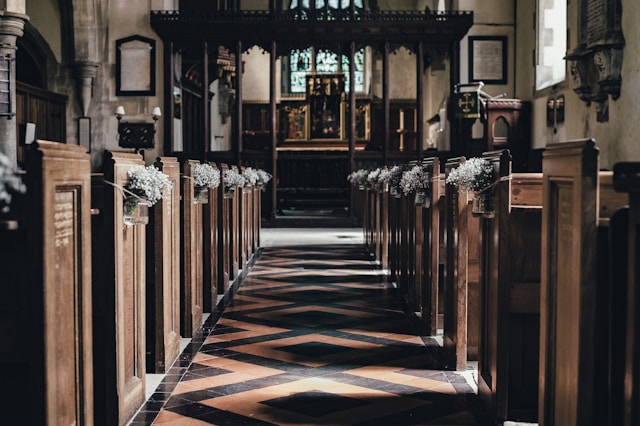
Discover the Hub of Faith and Fellowship: A Comprehensive Guide to Church Centers
Introduction
In the tapestry of modern Christian communities, church centers have emerged as thriving hubs where the faithful gather, grow in their faith, and connect with one another. These vibrant spaces are more than just places of worship; they are multi-faceted facilities that offer a wide range of services, programs, and amenities tailored to meet the needs of congregants of all ages and backgrounds.
If you are considering investing in a church center for your congregation, or if you simply want to learn more about their role in the modern church, this comprehensive guide will provide you with all the essential information you need.
Benefits of Church Centers
Church centers offer numerous benefits to congregations, including:
- Enhanced Worship Experience: Purpose-built facilities with state-of-the-art audio-visual systems, comfortable seating, and ambient lighting create an immersive and engaging environment for worship.
- Community Building: Church centers provide a central space for fellowship, Bible study, and social gatherings, fostering a sense of belonging and connection among congregants.
- Expanded Ministries: Dedicated rooms for youth programs, childcare, counseling, and other outreach activities allow churches to expand their ministry reach and serve their community effectively.
- Financial Savings: By consolidating church activities under one roof, congregations can reduce operating costs and streamline their financial management.
Types of Church Centers
Church centers come in various sizes and designs, catering to the unique needs of different congregations. Some common types include:
Standalone Centers
These stand-alone buildings are dedicated exclusively to church activities and offer ample space for worship, ministry, and fellowship.
Multi-Use Facilities
These centers are shared with other organizations, such as schools or community centers, allowing churches to optimize space and resources.
Renovated Buildings
Some congregations repurpose existing buildings, such as former warehouses or retail spaces, into church centers.
Key Considerations for Church Centers
When planning a church center, it is essential to consider the following factors:
Space Planning and Layout
Determine the appropriate size and layout for your center, ensuring it accommodates various activities while providing adequate circulation space.
Worship Area
Design the worship area to create a sacred and inspiring atmosphere, with attention to acoustics, seating arrangements, and lighting.
Ministry Rooms
Plan for dedicated rooms for specific ministries, such as youth groups, childcare, counseling, and community outreach programs.
Fellowship and Gathering Spaces
Provide comfortable and inviting spaces for fellowship, including a lounge area, coffee bar, or outdoor patio.
Accessibility and Safety
Ensure the center is accessible to all congregants, including those with disabilities, and prioritize safety measures such as secure entrances and emergency exits.
Tips for Building a Successful Church Center
Here are some practical tips for building a successful church center:
Engage the Congregation
Involve congregants in the planning process to ensure their needs and aspirations are met.
Secure Funding
Explore various funding options, including capital campaigns, grants, and partnerships.
Hire a Qualified Architect
Choose an architect with experience in designing religious facilities to ensure a functional and aesthetically pleasing space.
Pay Attention to Details
Don’t overlook the importance of furniture, lighting, and acoustics in creating a welcoming and inspiring environment.
Foster a Culture of Ownership
Encourage congregants to take ownership of their church center and participate in its maintenance and upkeep.
Conclusion
Church centers are more than just buildings; they are vibrant expressions of faith and community. By carefully planning and designing a church center that meets the specific needs of your congregation, you can create a space where the spirit of worship, fellowship, and service thrive for generations to come.
Whether you are a church leader looking to invest in a state-of-the-art facility or a layperson seeking to understand the role of church centers in the modern church, this comprehensive guide has provided you with the essential knowledge you need. By embracing the potential of church centers, we can strengthen our communities, deepen our faith, and make a lasting impact on the world.
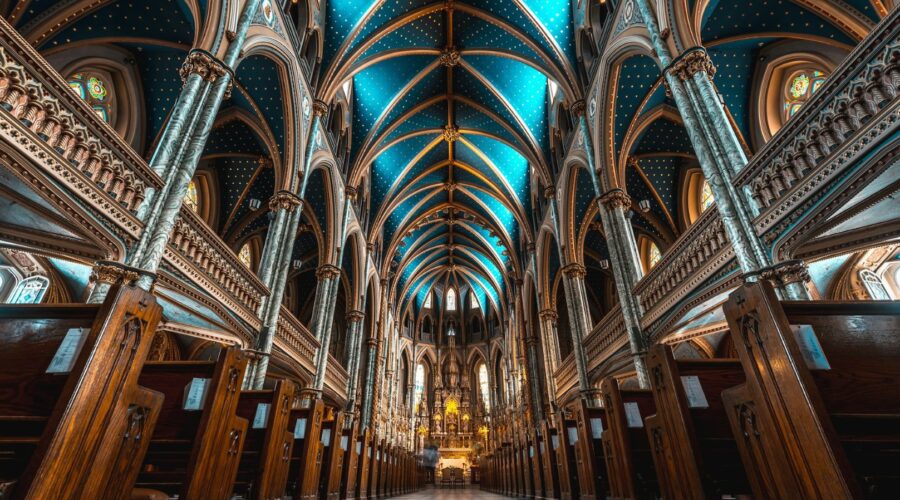
Prayers for the Dead: A Guide to Catholic Burial Traditions
Introduction
Death is an inevitable part of life, and for centuries, the Catholic Church has provided comfort and guidance to its members during this time of loss. Prayer for the dead is an important part of Catholic tradition, and there are many different prayers that can be used to seek God’s mercy and grace for the deceased.
The Importance of Prayer for the Dead
There are several reasons why Catholics pray for the dead:
- To commend the deceased to God’s care: Prayer helps to entrust the soul of the deceased to God’s loving embrace, asking for His mercy and forgiveness.
- To intercede for their souls: Catholics believe that prayers can help to purify the souls of the deceased and assist them in reaching heaven.
- To bring comfort to the living: Praying for the dead can provide comfort and peace to those who are grieving, knowing that their loved ones are being remembered and cared for.
Types of Catholic Prayers for the Dead
There are many different types of Catholic prayers for the dead, each with its own unique purpose and significance. Some of the most common include:
1. The Requiem Mass
The Requiem Mass is the primary liturgical celebration for the dead in the Catholic Church. It includes readings, prayers, and music specifically chosen to commemorate the deceased and pray for their souls.
2. The Rosary
The Rosary is a traditional Catholic prayer that can be used to pray for the dead. Each decade of the Rosary includes a prayer for the souls in purgatory, asking for their release from suffering.
3. The Divine Mercy Chaplet
The Divine Mercy Chaplet is a powerful prayer for the dead that was given to Saint Faustina Kowalska by Jesus Christ. It is prayed for the souls in purgatory, asking for their release and their admission into heaven.
4. The Prayer for the Faithful Departed
The Prayer for the Faithful Departed is a simple yet powerful prayer that can be used to pray for the dead at any time. It asks for God’s mercy and forgiveness for their sins and for their eternal rest.
Praying for the Dead in Different Circumstances
While there are many different types of Catholic prayers for the dead, the specific prayers used may vary depending on the circumstances:
1. Prayers for a Recent Deceased Person
In the immediate aftermath of a death, it is common to pray for the repose of the soul of the deceased. This can include the recitation of the Requiem Mass, the Rosary, or the Prayer for the Faithful Departed.
2. Prayers for a Deceased Loved One
Many Catholics continue to pray for their deceased loved ones throughout their lives. This can include praying for their souls on the anniversary of their death, their birthday, or any other special occasion.
3. Prayers for the Holy Souls in Purgatory
Catholics believe that some souls may need to undergo a period of purification, known as purgatory, before they can enter heaven. Prayers can be offered for the souls in purgatory, asking for their release from suffering and their eventual admission into God’s presence.
Conclusion
Prayer for the dead is an important part of Catholic tradition, providing comfort to the living and assistance to the deceased. By offering prayers for the departed, Catholics express their faith in the resurrection and their hope for the eternal salvation of all souls.
For further reading and resources:
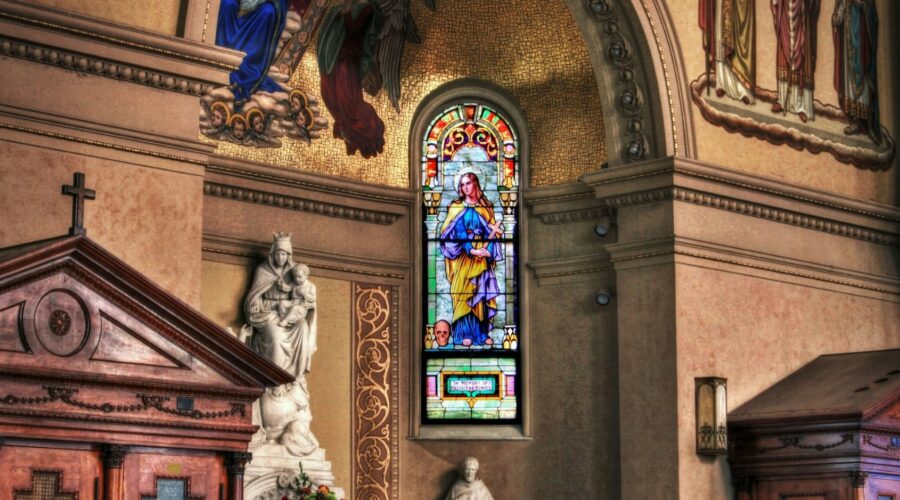
Unveiling the LDS Mormon Faith: A Comprehensive Guide
Introduction
The Church of Jesus Christ of Latter-day Saints (LDS), commonly known as the Mormon Church, is a Christian denomination with a unique set of beliefs and practices. This blog post aims to provide a comprehensive overview of the LDS faith, exploring its history, doctrines, culture, and societal impact.
Origins and History
The LDS Church traces its roots to Joseph Smith Jr., who claimed to have received divine revelations from God in the early 19th century. These revelations led to the publication of the Book of Mormon and the organization of the church in 1830. Persecuted for their beliefs, the early members of the church migrated westward to establish the state of Utah.
Doctrines and Beliefs
Holy Scriptures
The LDS Church reveres four key scriptures: the Bible (King James Version), the Book of Mormon, the Doctrine and Covenants, and the Pearl of Great Price. These scriptures are believed to contain God’s revealed word.
Godhead
Mormons believe in a Godhead composed of God the Father, His Son Jesus Christ, and the Holy Ghost. They believe in Christ’s divine nature as the Savior and Redeemer.
Plan of Salvation
The LDS faith teaches that individuals lived as spirits before being born into mortality. They believe in eternal progression through baptism, obedience to commandments, and temple ordinances.
Eternal Families
Mormons place great importance on family relationships, believing that families can be sealed together for eternity through temple ordinances such as marriage. Marriage is considered a sacred covenant and a means for eternal growth.
Culture and Practices
Sunday Worship
Mormons attend church every Sunday, where they participate in sacrament meetings, which include partaking of the bread and water as symbols of Christ’s sacrifice. Additional worship services include Relief Society for women, Priesthood Quorum for men, and Primary for children.
Missionary Service
Young men and women who have reached the age of 18 or 19 are encouraged to serve as missionaries for two years. Missionaries are assigned to different parts of the world to teach the gospel and perform service.
Temples
Temples are sacred buildings where ordinances such as marriage, baptism, and endowment are performed. These ordinances are considered essential for salvation and eternal progression.
Societal Impact
The LDS Church has had a significant impact on society, both in Utah and beyond:
Education
Mormons place a high value on education. The church operates Brigham Young University, BYU-Idaho, and other educational institutions.
Healthcare
The church provides healthcare through its hospitals, clinics, and charity organizations, serving both members and non-members.
Humanitarian Aid
The LDS Church engages in extensive humanitarian aid efforts around the world, providing food, clothing, and shelter to those in need.
Controversies and Criticisms
The LDS Church has faced controversies and criticisms over the years, including:
Polygamy
In the 19th century, some members of the church practiced polygamy, which is now prohibited by the church.
Race and Priesthood
Until 1978, the church restricted priesthood ordination to white males. This policy has since been discontinued.
Conclusion
The LDS Mormon faith is a complex and diverse religion with a rich history and unique set of beliefs and practices. Its members are known for their strong family values, missionary service, and contributions to society. While the church has faced some controversies, it remains a vibrant and dynamic religious organization.
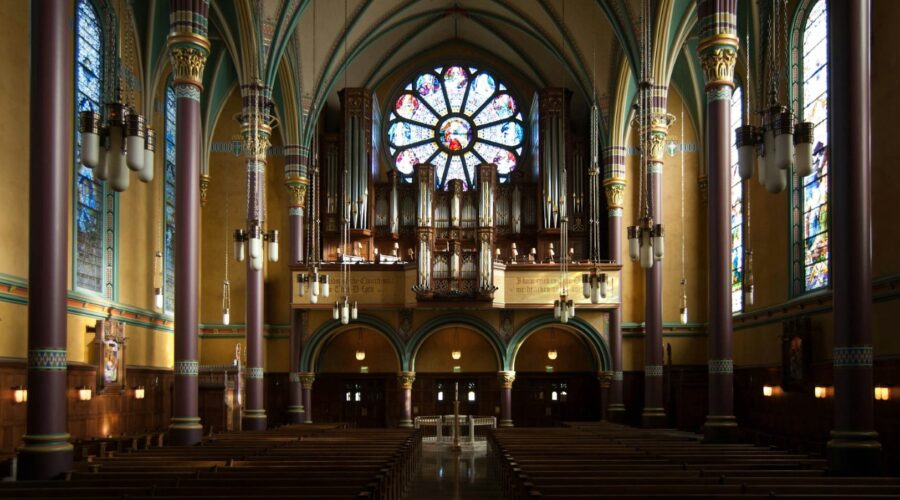
Discover a Protestant Church Near You: A Comprehensive Guide for Spiritual Connection, Growth, and Community
Introduction
Embarking on the journey of faith can be both exciting and daunting. Finding a Protestant church near you is an essential step in connecting with a community of believers, exploring your spiritual path, and deepening your relationship with God. This comprehensive guide will lead you through the process, providing valuable information and tips to help you find the perfect church home.
Types of Protestant Churches
Protestant churches encompass a diverse range of denominations, each with its unique beliefs, practices, and worship styles. Here are some common denominations you may encounter:
- Baptist
- Presbyterian
- Methodist
- Lutheran
- Anglican
- Pentecostal
Locating a Protestant Church
There are several effective ways to find a Protestant church near you:
Online Directories
Online directories such as ChurchFinder.com and ProtestantChurchLocator.org provide comprehensive listings of Protestant churches in your area. You can filter your search by denomination, location, and other criteria.
Local Resources
Check local newspapers, community centers, and public libraries for information about churches in your neighborhood. You can also ask friends, family, or neighbors for recommendations.
Social Media
Many Protestant churches have active social media pages. Search for churches in your area on platforms like Facebook and Instagram to learn about their services, events, and community involvement.
What to Look for in a Church
Beliefs and Values
Ensure that the church’s core beliefs and values align with your own spiritual understanding. Consider their views on key issues such as salvation, baptism, and the role of Scripture.
Worship Style
Choose a church with a worship style that suits your preferences. Some churches have traditional services with hymns and organ music, while others have contemporary worship with modern music and a casual atmosphere.
Community and Outreach
Find a church that fosters a strong sense of community and offers opportunities for fellowship, service, and spiritual growth. Consider their outreach programs, community involvement, and opportunities for discipleship.
Visiting a Church
Once you have identified a few potential churches, it’s important to visit them in person to get a firsthand experience:
Attend a Service
Attend a Sunday service to experience the church’s worship style, listen to the sermon, and interact with the congregation.
Meet the Pastor
Make an appointment to meet with the pastor or other church leaders. This gives you an opportunity to ask questions and learn more about the church’s mission and vision.
Explore the Church
Take time to explore the church’s facilities, including the sanctuary, classrooms, and social areas. This will provide you with a sense of the church’s size, layout, and overall atmosphere.
Tips for Choosing a Church
Pray for Guidance
Seek God’s guidance in your search. Pray for wisdom and discernment as you explore different churches.
Listen to Your Heart
Trust your instincts when choosing a church. Pay attention to how you feel during services, interactions with the congregation, and conversations with the pastor.
Consider Practical Factors
While spiritual connection is paramount, consider practical factors such as location, service times, and parking availability.
Visit Multiple Churches
Don’t limit your search to one church. Visit several to compare worship styles, beliefs, and community outreach before making a decision.
Benefits of Attending a Protestant Church
Spiritual Growth
Regularly attending a Protestant church provides opportunities for spiritual growth through worship, Bible study, and discipleship.
Community Connection
Churches are not just buildings; they are communities of believers who support, encourage, and pray for one another.
Service and Outreach
Many Protestant churches have a strong emphasis on serving the community and spreading the Gospel through outreach programs and missions.
Accountability and Support
Being part of a church community provides accountability and support during challenging times and helps you stay on track with your spiritual journey.
Conclusion
Finding a Protestant church near you is an important step in your spiritual journey. By following the guidance and tips provided in this guide, you can find a church that aligns with your beliefs, worship preferences, and community values. May this journey bring you closer to God and connect you with a community of faith where you can grow, serve, and experience the transformative power of the Gospel.
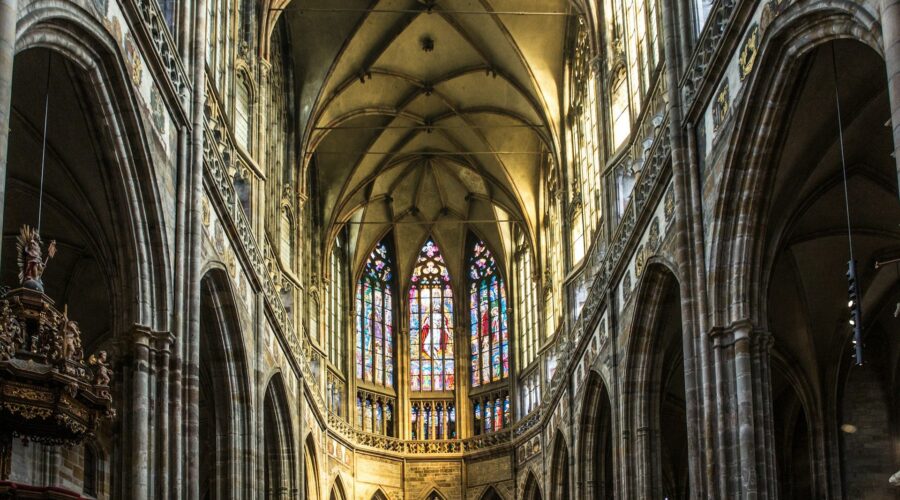
Discover the Holy Cross Catholic Church: A Sanctuary of Faith and History
A Historic Legacy
The Holy Cross Catholic Church stands as a testament to the enduring legacy of Catholicism in the United States. Founded in 1836, the church has witnessed countless baptisms, marriages, and funerals, shaping the lives of generations of faithful parishioners.
The Early Years
In the early 19th century, Catholics in the New England area faced discrimination and persecution. Despite these challenges, a small group of faithful gathered in Boston in 1836 to establish the first Catholic church in the city.
The original church building was a modest wooden structure located on Chauncy Street. However, as the Catholic population grew, the need for a larger and more permanent home became evident.
The Neo-Gothic Masterpiece
In 1871, the construction of the current Holy Cross Cathedral began. Designed by the renowned architect Patrick Keely, the building is a prime example of Neo-Gothic architecture.
The cathedral features stunning stained glass windows, intricate carvings, and soaring spires. Its 194-foot high bell tower is one of the tallest structures in the city.
A Vibrant Community
Today, Holy Cross Catholic Church is home to a diverse and thriving community of over 5,000 parishioners. The church offers a wide range of ministries, programs, and services to meet the spiritual and pastoral needs of its members.
Mass Times and Schedule
Holy Cross offers several Mass times throughout the week and on Sundays, accommodating the schedules of all parishioners.
Day Time Sunday 7:30am, 9:00am, 11:00am, 1:00pm Monday 8:00am, 12:10pm Tuesday 8:00am Wednesday 8:00am Thursday 8:00am, 6:00pm Friday 8:00am Saturday 4:00pm, 6:00pm Special Ministries
- Altar and Rosary Societies
- Choir and Music Ministry
- Legion of Mary
- Knights of Columbus
- Religious Education
- Youth Group
Spiritual Growth and Pilgrimage
Holy Cross Catholic Church is not only a center of worship but also a place for spiritual growth and pilgrimage.
Adoration of the Blessed Sacrament
The church offers daily adoration of the Blessed Sacrament, providing parishioners with an opportunity for quiet reflection and intimate communion with God.
Pilgrimage to the Holy Land
Led by the pastor, Holy Cross organizes periodic pilgrimages to the Holy Land. These pilgrimages allow parishioners to walk in the footsteps of Jesus and deepen their understanding of the faith.
Visiting Holy Cross Catholic Church
Holy Cross Catholic Church welcomes visitors of all faiths. Whether you are a practicing Catholic, a seeker of spirituality, or a tourist interested in architecture and history, you are encouraged to visit the church.
Location and Directions
Holy Cross Catholic Church is located at 655 Washington Street, Boston, MA 02111.
Parking
Parking is available on the street and in a nearby parking garage. Fees may apply.
Accessibility
The church is wheelchair accessible. Assisted listening devices are available upon request.
Conclusion
Holy Cross Catholic Church stands as a beacon of faith, community, and architectural beauty in the heart of Boston. Through its rich history, vibrant present, and unwavering commitment to spiritual growth, the church продолжает to inspire and enrich the lives of its parishioners and visitors alike.
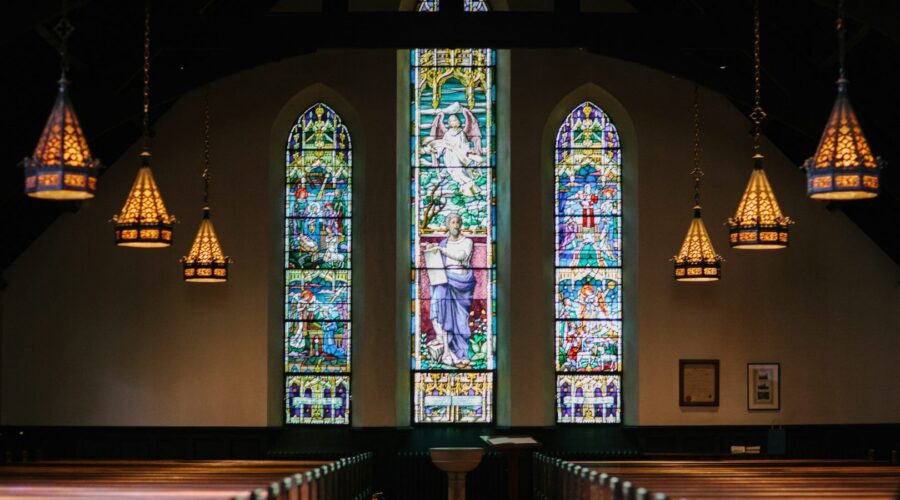
The Power of Prayer for Healing: A Catholic Guide
Prayer as a Source of Healing
Within the Catholic tradition, prayer has long been recognized as a powerful force for healing. Prayer is a way to connect with God and to ask for His help and guidance. It can also be a way to express our gratitude for the blessings we have received.
There are many different types of prayers that can be used for healing. Some common prayers include:
- The Lord’s Prayer
- The Hail Mary
- The Glory Be
- The Our Father
- The Apostles’ Creed
How to Pray for Healing
There is no one right way to pray for healing. You can pray in any way that you feel comfortable. However, there are some general tips that can help you to make your prayers more effective.
- Be specific in your prayers. Don’t just ask for healing in general. Instead, be specific about what you are asking for. For example, you might pray for healing from a particular illness or injury.
- Be persistent in your prayers. Don’t give up if you don’t see results immediately. Keep praying, even when it seems like nothing is happening.
- Have faith in the power of prayer. Believe that God can heal you, and that He will answer your prayers.
Prayers to Specific Saints for Healing
In addition to general prayers for healing, there are also prayers to specific saints who are known for their healing powers.
- Saint Anthony of Padua
- Saint Jude Thaddeus
- Saint Raphael the Archangel
- Saint Peregrine Laziosi
- Saint Charbel Makhlouf
Other Resources for Healing
In addition to prayer, there are a number of other resources that can be helpful for healing. These include:
- Medical treatment
- Counseling
- Alternative therapies
- Support groups
It is important to remember that healing is a journey, and that there is no one-size-fits-all solution. What works for one person may not work for another. The best way to find what works for you is to explore different options and to be patient with yourself.
Conclusion
Prayer is a powerful force for healing. When we pray for healing, we are opening ourselves up to the healing power of God. Prayer can help us to connect with our own inner strength and to find the courage to face whatever challenges we may be facing.
If you are struggling with an illness or injury, I encourage you to try praying for healing. You may be surprised at the results.
Additional Resources
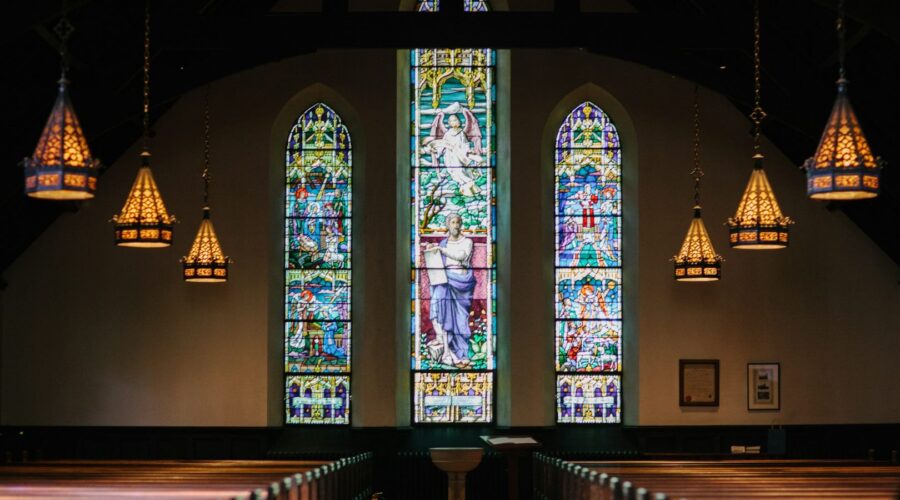
Witness the Power of Faith: Live Church Services at Your Fingertips
In the modern era of technological advancements, worship has transcended the confines of physical churches. Live church services have emerged as a powerful means of connecting with congregations and fostering spiritual growth from the comfort of one’s own home.
The Benefits of Live Church Services
- Convenience: Attend services from anywhere with an internet connection, regardless of location or mobility limitations.
- Accessibility: Individuals who may have difficulty attending in-person services due to illness, age, or other factors can still participate.
- Flexibility: View services at your own schedule, allowing for flexibility in busy lifestyles.
How to Find Live Church Services
Numerous churches offer live streaming services through various platforms:
- Church Websites: Many churches have dedicated sections on their websites featuring live services.
- Social Media: Churches often stream services via Facebook Live, YouTube Live, or other social media platforms.
li>Mobile Apps: Some churches have their own mobile apps that provide access to live services.
Enhancing Your Live Church Service Experience
- Prepare a Sacred Space: Create a designated area in your home for worship, free from distractions.
- Participate Actively: Engage in the service by singing along, praying, and taking notes.
li>Connect with Community: Utilize chat features or online forums to interact with other attendees.
Tips for Participating in Live Church Services
- Check the church’s website or social media for service times.
- Test your internet connection and ensure stable bandwidth.
- Arrive early to avoid technical difficulties.
- Dress appropriately, as if you were attending in person.
- Be respectful of others and avoid disruptive behavior.
Types of Live Church Services
Live church services can vary in format and content:
- Traditional Services: These typically follow a structured order of worship, including hymns, readings, prayers, and a sermon.
- Contemporary Services: Focus on modern music, relevant messages, and worship styles that appeal to younger generations.
- Revival or Camp Meeting Services: Extended services with a focus on spiritual renewal and emotional worship.
Benefits for Pastors and Churches
Live church services offer benefits for pastors and churches as well:
- Increased Reach: Expand the reach of your message to a wider audience, including those who may not be able to attend in person.
- Building Community: Engage with attendees online and foster a sense of community beyond physical gatherings.
- Evangelization: Use live streaming to share the gospel with individuals who may not have previously connected with your church.
Troubleshooting Live Church Service Issues
In the event of technical difficulties, try the following:
- Refresh the streaming page or app.
- Check your internet connection and restart your router if necessary.
- Temporarily disable any ad blockers or extensions that may interfere with streaming.
- Contact the church’s technical support team for assistance.
Conclusion
Live church services have become an integral part of worship in the 21st century. They provide convenience, accessibility, and flexibility for individuals seeking to connect with a spiritual community. By embracing live streaming, churches can extend their reach, build stronger communities, and share the gospel with a wider audience. Whether you are looking to enhance your personal faith journey or find a new way to engage with your congregation, live church services offer a transformative and enriching experience.
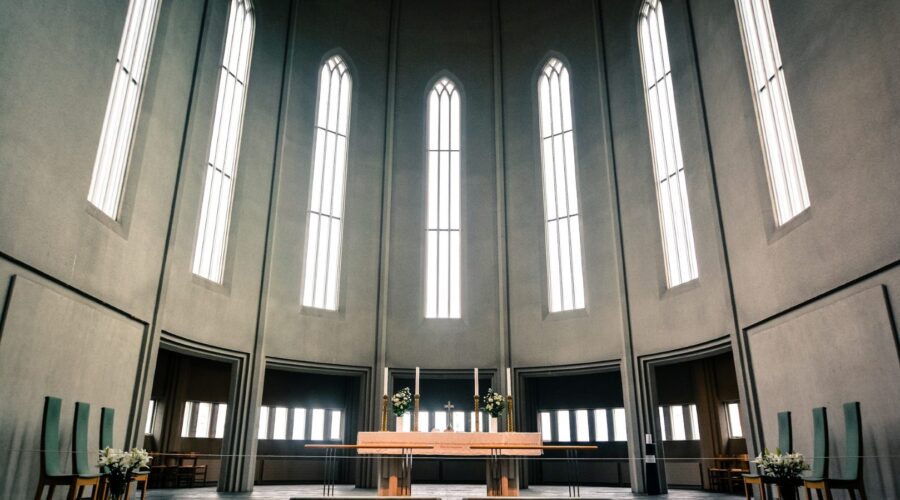
Presbyterian Church: A Comprehensive Guide for Understanding Its History, Beliefs, and Practices
Introduction
Presbyterianism is a Protestant Christian tradition that traces its roots back to the Reformation in the 16th century. It is characterized by its emphasis on representative government, its emphasis on the sovereignty of God, and its focus on the importance of education.
History of the Presbyterian Church
The Presbyterian Church was founded in Scotland in 1560 by John Knox, a prominent Protestant reformer. Knox had been influenced by the teachings of John Calvin, another prominent Protestant reformer, and the Presbyterian Church adopted many of Calvin’s beliefs.
- 1560: John Knox founds the Presbyterian Church in Scotland.
- 1643: The Westminster Assembly of Divines is held in London, England. The assembly produces the Westminster Confession of Faith, which becomes the doctrinal standard for many Presbyterian churches.
- 1706: The Act of Union is passed in Scotland, which unites the Presbyterian Church of Scotland with the Church of Scotland.
- 1789: The Presbyterian Church in the United States of America is founded.
- 1861-1865: The American Civil War divides the Presbyterian Church in the United States of America into two separate denominations: the Presbyterian Church in the United States of America (PCUSA) and the Presbyterian Church in the Confederate States of America (PCSA).
- 1983: The PCUSA and the PCSA reunite to form the Presbyterian Church (U.S.A.).
Beliefs of the Presbyterian Church
The Presbyterian Church holds to a number of core beliefs, including:
- The sovereignty of God: Presbyterians believe that God is sovereign over all things, and that he has created the world and everything in it for his own purposes.
- The authority of Scripture: Presbyterians believe that the Bible is the inspired word of God, and that it is the final authority for all matters of faith and practice.
- The priesthood of all believers: Presbyterians believe that all Christians are called to be priests before God, and that they have equal access to God through Jesus Christ.
- The importance of education: Presbyterians believe that education is essential for the growth of the Christian faith, and they have a long history of supporting educational institutions.
Practices of the Presbyterian Church
The Presbyterian Church has a number of distinctive practices, including:
- Representative government: Presbyterian churches are governed by representative assemblies, which are elected by the members of the congregation. These assemblies make decisions on behalf of the congregation, and they are responsible for overseeing the church’s finances, hiring staff, and setting policy.
- Liturgical worship: Presbyterian worship services are typically liturgical, which means that they follow a set order of worship. This order of worship includes readings from the Bible, prayers, and hymns.
- The sacraments: Presbyterians recognize two sacraments: baptism and the Lord’s Supper. Baptism is a sacrament of initiation, and it is typically administered to infants. The Lord’s Supper is a sacrament of remembrance, and it is typically administered on a weekly basis.
- Confirmation: Confirmation is a rite of passage that is typically administered to teenagers and young adults. Confirmation is a time for young people to affirm their faith and to make a commitment to the Presbyterian Church.
- Ordination: Ordination is a rite of passage that is typically administered to men and women who are called to serve as ministers in the Presbyterian Church. Ordination is a time for ministers to affirm their faith and to make a commitment to the Presbyterian Church.
Conclusion
The Presbyterian Church is a diverse and vibrant Christian tradition that has a long and rich history. Presbyterians are committed to the sovereignty of God, the authority of Scripture, the priesthood of all believers, and the importance of education. They practice representative government, liturgical worship, and the sacraments of baptism and the Lord’s Supper. The Presbyterian Church is a welcoming and inclusive community that is committed to serving God and others.
Frequently Asked Questions
What is the difference between a Presbyterian and a Methodist?
Presbyterians and Methodists are both Protestant Christian denominations, but there are some key differences between the two. Presbyterians emphasize representative government, the sovereignty of God, and the importance of education. Methodists emphasize the importance of personal experience, the role of the Holy Spirit, and the importance of evangelism.
What is the difference between a Presbyterian and a Congregationalist?
Presbyterians and Congregationalists are both Protestant Christian denominations that emphasize the importance of representative government. However, Presbyterians believe that the church is a universal body, while Congregationalists believe that the church is a local body. Presbyterians also have a more formal liturgy than Congregationalists.
What is the difference between a Presbyterian and a Baptist?
Presbyterians and Baptists are both Protestant Christian denominations that emphasize the importance of the Bible. However, Presbyterians believe that the Bible is the final authority for all matters of faith and practice, while Baptists believe that the Bible is the final authority for matters of faith but not for matters of practice. Presbyterians also have a more formal liturgy than Baptists.
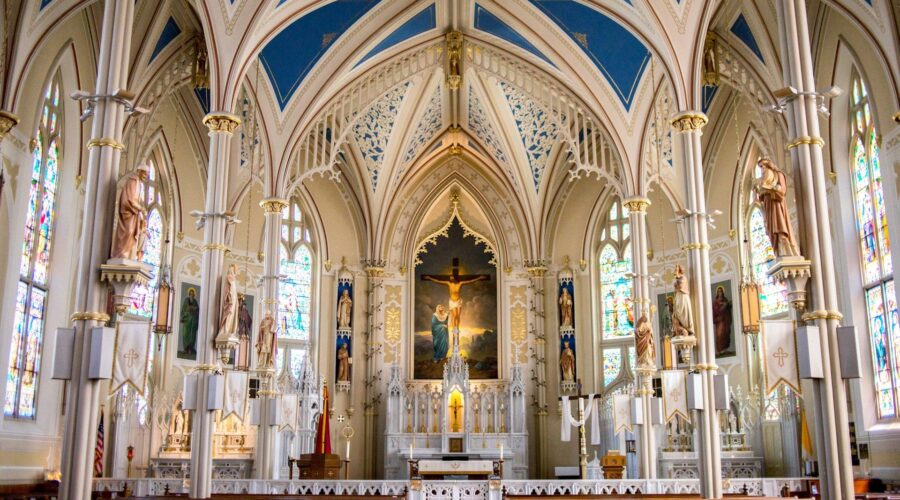
The Sacred Heart: A Symbol of Love, Compassion, and Humility
The Sacred Heart is a widely recognized symbol in Christianity, representing the boundless love and compassion of Jesus Christ for humanity.
The Origin of the Sacred Heart Devotion
The devotion to the Sacred Heart originated in the 17th century with Saint Margaret Mary Alacoque, a French nun. She claimed to have experienced a series of visions of Jesus, in which he revealed his Sacred Heart as a source of divine love and mercy.
The Twelve Promises of the Sacred Heart
To those who practice the devotion to the Sacred Heart, Jesus is said to have made twelve promises:
- I will give them all the graces necessary for their state in life.
- I will establish peace in their families.
- I will comfort them in all their afflictions.
- I will be their secure refuge during life and especially at the hour of death.
- I will bless every place where an image of my Heart is exposed and honored.
- I will give to priests the power to touch the most hardened hearts.
- Those who propagate this devotion will have their names written in my Heart.
- I will grant them the grace of final perseverance.
- I will obtain for them a particular increase of glory in heaven.
- I will rescue them from the fires of purgatory.
- I will make all their pious undertakings prosper.
- I will give them my most loving Heart as their secure refuge.
Symbolism of the Sacred Heart
The Sacred Heart is often depicted as a human heart surrounded by flames, representing the divine love that burns within it. It is pierced by a crown of thorns, symbolizing the suffering that Jesus endured for the redemption of humanity.
The Cross and the Sacred Heart
The cross and the Sacred Heart are often depicted together, representing the inseparable union between Jesus’ sacrifice on the cross and his boundless love. The cross symbolizes his suffering and death, while the Sacred Heart symbolizes his eternal love and mercy.
Devotion to the Sacred Heart
The devotion to the Sacred Heart is widely practiced throughout the Catholic Church. It involves various forms of prayer, such as:
Feast of the Sacred Heart
The Feast of the Sacred Heart is celebrated in the Catholic Church on the Friday after the Feast of Corpus Christi. It is a day dedicated to honoring the love and compassion of Jesus Christ.
Resources for Sacred Heart Devotion
The devotion to the Sacred Heart remains a powerful and meaningful practice for millions of Catholics worldwide. It serves as a reminder of the boundless love and compassion of Jesus Christ, offering hope, comfort, and strength to those who turn to it.
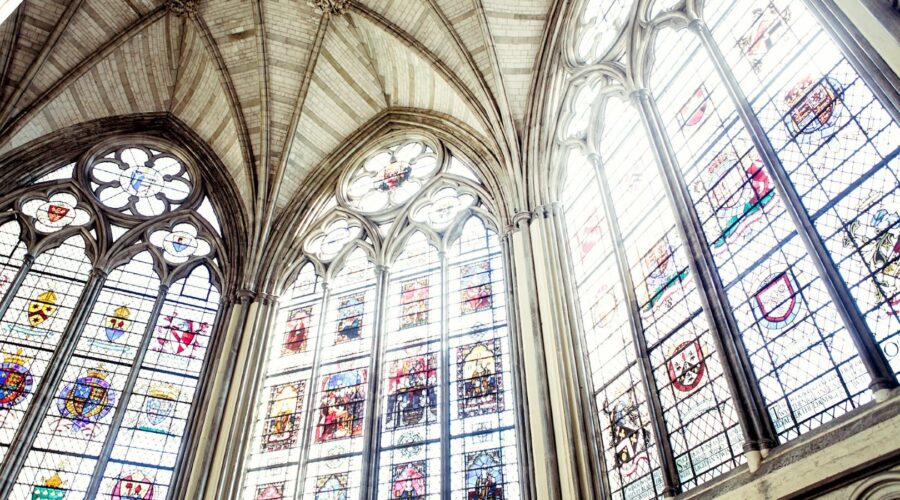
The Orthodox Cross: Symbol of Faith and Salvation
Origin and History
The Orthodox cross, also known as the Eastern Orthodox cross, is a distinctive symbol of the Christian faith. Its origins can be traced back to the early centuries of Christianity, and it has since become a ubiquitous symbol of the Orthodox Church.
The earliest known depictions of the Orthodox cross date back to the 2nd century AD. These depictions show a simple cross with equal arms, often with a small circle or triangle at the center. Over time, the design of the Orthodox cross evolved, and the eight-pointed cross, which is the most common form today, emerged in the 4th century AD.
Symbolism
The Orthodox cross is a powerful symbol of faith and salvation. The eight arms of the cross represent the eight beatitudes of Christ, as well as the eight days of the week. The small circle or triangle at the center of the cross represents the crown of thorns worn by Christ during his crucifixion.
The Orthodox cross is also a reminder of the Trinity. The upper arm of the cross represents the Father, the lower arm represents the Son, and the crossbar represents the Holy Spirit. The small circle or triangle at the center of the cross represents the unity of the Trinity.
Variations
There are several variations of the Orthodox cross. Some crosses have a small crescent moon at the base, which represents the light of Christ overcoming the darkness of sin. Other crosses have a skull and crossbones at the base, which represents the victory of Christ over death.
The design of the Orthodox cross can also vary depending on the region. In Russia, the Orthodox cross often has a three-bar design, with the upper bar representing the sign of the cross made by the priest during baptism, the middle bar representing the crossbar of the cross on which Christ was crucified, and the lower bar representing the footrest of the cross.
Use in Worship
The Orthodox cross is used in a variety of ways in worship. It is used in processions, as a blessing, and as a symbol of faith. The Orthodox cross is also often placed on the altar during the Divine Liturgy.
The Orthodox cross is a powerful symbol of faith and salvation. It is a reminder of the suffering and death of Christ, as well as the victory over sin and death. The Orthodox cross is also a symbol of the Trinity and the unity of the Church.
Significance for Orthodox Christians
The Orthodox cross is a sacred symbol for Orthodox Christians. It is a reminder of the faith, hope, and love that is central to the Christian message. The Orthodox cross is also a symbol of the Church, which is the body of Christ on earth.
Orthodox Christians often wear the Orthodox cross as a symbol of their faith. The cross is also often used in religious ceremonies and services. The Orthodox cross is a powerful reminder of the love of God and the hope of salvation.
Conclusion
The Orthodox cross is a powerful symbol of the Christian faith. It is a reminder of the suffering and death of Christ, as well as the victory over sin and death. The Orthodox cross is also a symbol of the Trinity and the unity of the Church. The Orthodox cross is a sacred symbol for Orthodox Christians, and it is often used in worship and as a symbol of faith.
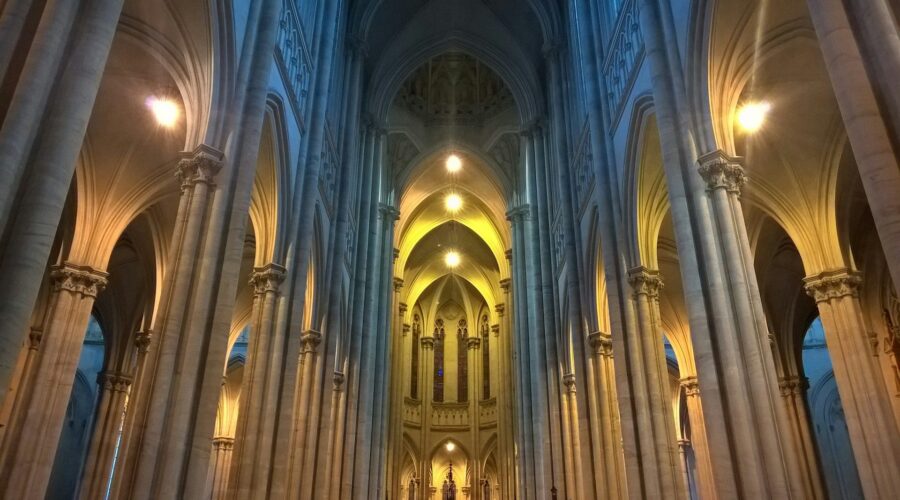
Discover the Transformative Power of T.D. Jakes Live
Immerse Yourself in a Spiritual Awakening
Prepare for an unparalleled spiritual journey with T.D. Jakes Live, a captivating ministry that empowers and inspires. Renowned Bishop T.D. Jakes leads a congregation of thousands, sharing his wisdom and offering guidance on faith, relationships, and personal growth. Through dynamic sermons, insightful discussions, and uplifting music, T.D. Jakes Live ignites a fire within the hearts of its attendees, leaving them transformed and renewed.
Unveiling the Essence of T.D. Jakes Live
*
Inspiring Sermons:
Bishop Jakes is known for his thought-provoking sermons that delve into the complexities of human nature, faith, and spirituality. His ability to connect with his audience on a personal level makes his messages both relatable and transformative.
*
Empowering Discussions:
T.D. Jakes Live goes beyond traditional sermons to engage in open and honest discussions. Bishop Jakes and his team address real-life issues, offering practical advice and guidance on relationships, career, and personal fulfillment.
*
Uplifting Music:
Music plays an integral role in T.D. Jakes Live, creating an atmosphere of worship and celebration. The team of talented musicians and vocalists leads the congregation in uplifting songs that inspire and connect attendees with their faith.
Benefits of Attending T.D. Jakes Live
Embarking on the T.D. Jakes Live experience brings forth a myriad of benefits that can transform your life:
*
Spiritual Growth and Renewal:
Immerse yourself in a community of like-minded individuals seeking spiritual growth. T.D. Jakes Live provides a sanctuary where you can deepen your connection with faith and explore your spiritual journey.
*
Practical Life Guidance:
Gain practical wisdom and guidance that can empower you to overcome challenges and thrive in all aspects of your life. T.D. Jakes Live offers insights and strategies for building healthy relationships, achieving career success, and managing personal finances.
*
Emotional Support and Community:
Connect with a supportive community that extends beyond the walls of the congregation. T.D. Jakes Live fosters a sense of belonging, offering a safe space for attendees to share their struggles, experiences, and triumphs.
How to Experience T.D. Jakes Live
Attending T.D. Jakes Live is an extraordinary opportunity for spiritual growth and personal transformation. Here are the available options:
*
In-Person Services:
- Visit the T.D. Jakes International Ministry website for event dates and locations.
- Purchase tickets in advance to secure your seat.
*
Virtual Services:
- Join T.D. Jakes Live from the comfort of your home through their online streaming platform.
- Register for the virtual services on the ministry’s website.
Testimonials: The Impact of T.D. Jakes Live
“T.D. Jakes Live has been instrumental in my spiritual growth. Bishop Jakes’ sermons have challenged me to think deeply about my faith and purpose, leading me to a profound transformation.” – Sarah Johnson
“The discussions at T.D. Jakes Live have provided me with invaluable advice for navigating the complexities of relationships and career. I feel empowered and equipped with practical tools to succeed in all areas of my life.” – Michael Williams
“The uplifting music at T.D. Jakes Live creates an atmosphere that fills me with joy and connects me to my faith in a tangible way. It’s a transformative experience that stays with me long after the service.” – Emily Carter
Frequently Asked Questions
*
How often does T.D. Jakes Live take place?
T.D. Jakes Live holds in-person services on a regular basis. The schedule and locations vary, so it’s recommended to check the ministry’s website for updates.
*
Is there a cost to attend T.D. Jakes Live?
In-person services may have a nominal fee or donation suggested. Virtual services are typically free to attend.
*
What should I expect at T.D. Jakes Live?
Expect an uplifting and transformative experience that includes dynamic sermons, insightful discussions, uplifting music, and a supportive community.
*
How can I connect with T.D. Jakes Live online?
Visit the T.D. Jakes International Ministry website, follow the ministry on social media platforms, and subscribe to their email list for updates and virtual service information.
Conclusion
T.D. Jakes Live is a beacon of hope and inspiration that empowers individuals to live fulfilling lives rooted in faith and purpose. Whether you attend in-person or virtually, the transformative power of T.D. Jakes Live will leave an enduring impact on your spiritual, emotional, and personal well-being. Embrace the opportunity to embark on a journey of transformation and discover the transformative power that T.D. Jakes Live holds.
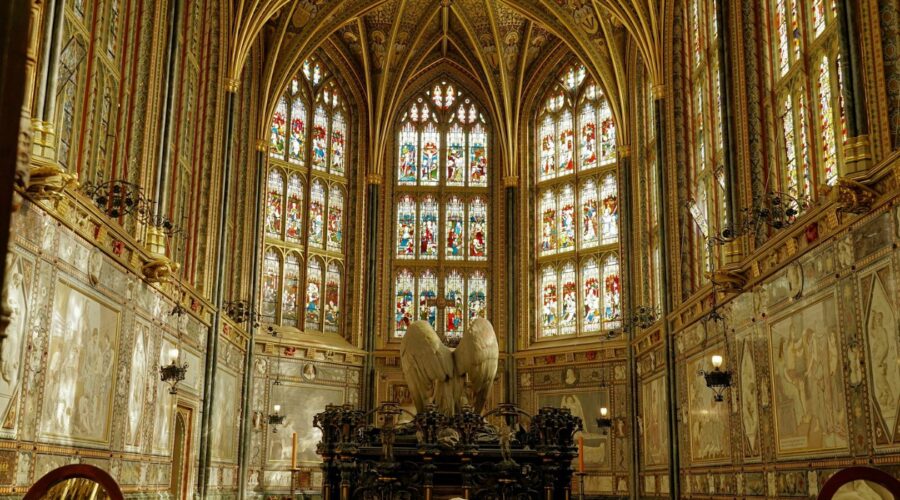
Unveiling the Sacred Heart of Jesus: A Guide to Its History, Devotion, and Significance
Introduction
The Sacred Heart of Jesus is a revered symbol of Christ’s boundless love and mercy. Its origins lie in the Christian tradition, where it signifies the heart of Jesus Christ as the source of divine grace and compassion.
Historical Origins
Devotional Practices
The devotion to the Sacred Heart emerged in the Middle Ages, influenced by the writings of saints such as Saint Gertrude the Great and Saint Mechtilde of Hackeborn. These saints described visionary experiences that revealed the heart of Jesus as a symbol of his immense love.
Solemnity and Feast Day
In 1675, Pope Clement X established the Feast of the Sacred Heart of Jesus, celebrated annually on the first Friday after the Solemnity of the Most Holy Trinity. This feast became a formal expression of devotion and a testament to the growing popularity of the cult.
Marian Apparitions
In the 19th century, the apparition of Jesus to Saint Margaret Mary Alacoque played a pivotal role in spreading the devotion to the Sacred Heart. During these apparitions, Jesus revealed the 12 promises of the Sacred Heart and emphasized the importance of acts of reparation and consecration.
Theology of the Sacred Heart
Symbol of Divine Love
The Sacred Heart of Jesus is primarily seen as a representation of the immeasurable love of God for humanity. It evokes the concept of a divine heart filled with tenderness, compassion, and forgiveness.
Reconciliation and Salvation
Through his pierced heart, Jesus paid the ultimate price for humanity’s sins. The Sacred Heart symbolizes the reconciliation between God and humanity, offering a path to salvation and eternal life.
Source of Grace and Mercy
Devotion to the Sacred Heart is associated with the belief that Jesus’s heart is a source of divine grace and mercy. It is believed that through prayers, sacrifices, and acts of reparation, devotees can receive blessings and spiritual protection.
Devotional Practices
Reparation and Consecration
Acts of reparation, such as prayer, penance, and suffering, are considered essential in devotion to the Sacred Heart. Consecration, or entrusting oneself to the Sacred Heart, is a profound act of surrender and commitment.
Liturgical Celebrations
The Feast of the Sacred Heart is marked by special liturgical celebrations in Catholic churches, including solemn Masses, processions, and Eucharistic adoration.
Private Devotions
Many devotees engage in personal acts of devotion, such as the daily Consecration to the Sacred Heart, the Nine First Fridays devotion, and the practice of the First Friday Mass.
Impact on Art and Culture
The devotion to the Sacred Heart has influenced countless works of art and literature throughout history. From grand cathedrals adorned with elaborate iconography to humble depictions in homes, the Sacred Heart has become a ubiquitous symbol of Christian faith.
Examples of Devotion
Canonical Consecrations
Numerous nations, dioceses, and religious communities have officially consecrated themselves to the Sacred Heart, recognizing its profound spiritual significance.
National Shrines
Dedicated shrines, such as the Basilica of the Sacred Heart in Paris and the National Shrine of the Sacred Heart in Washington, D.C., serve as centers of pilgrimage and devotion.
Saintly Advocates
Throughout history, saints such as Saint Ignatius of Loyola, Saint Therese of Lisieux, and Saint John Paul II have been fervent promoters of devotion to the Sacred Heart.
Tips for Devotion
* Cultivate a personal relationship with the Sacred Heart through prayer and reflection.
* Engage in acts of reparation and consecration to express your love and gratitude.
* Attend liturgical celebrations and participate in devotions dedicated to the Sacred Heart.
* Surround yourself with reminders of the Sacred Heart, such as images, medals, or rosaries.
* Seek spiritual guidance from priests or other trusted individuals to deepen your understanding and practice of devotion.Conclusion
The Sacred Heart of Jesus stands as an enduring symbol of divine love, mercy, and salvation. Embracing this devotion offers a profound path to a closer relationship with Christ and a deeper understanding of his immeasurable love for humanity. Through its rich history, theological significance, and devotional practices, the Sacred Heart continues to inspire and guide countless individuals in their spiritual journeys.